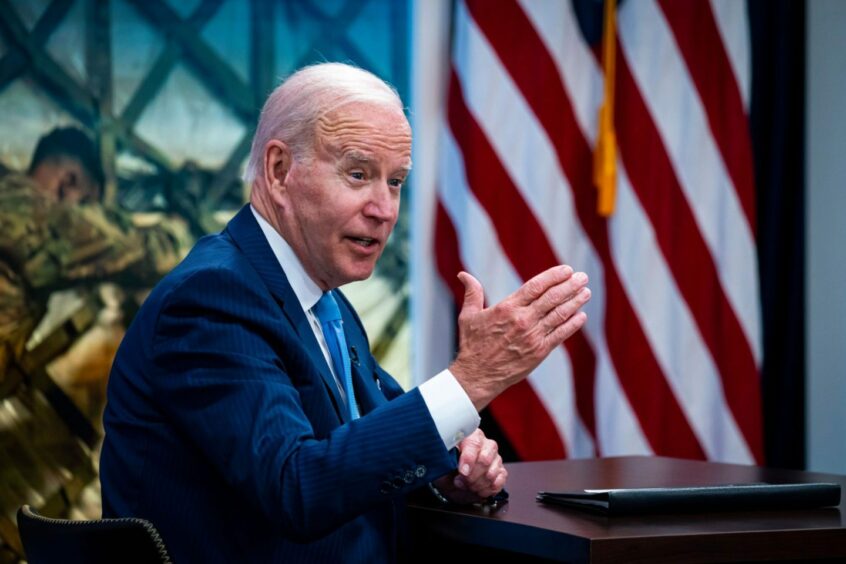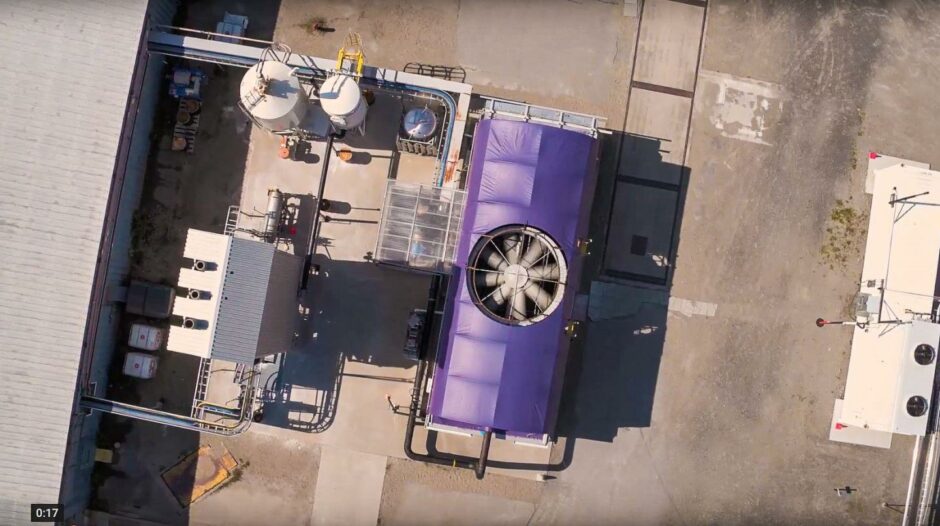
While Europe has been grappling with the impacts of the war in Ukraine and the huge price rises in oil and gas that it has brought, in the US, the energy landscape looks very different.
Consumers have faced significant price rises, but nothing on the scale of what Europeans have faced. And while nations such as Germany, France and the UK are scrabbling to secure supplies of gas, coal and oil, in America, the taps have opened on a new era of clean energy investment.
This new era came out of the blue and it all happened very quickly. Senator Joe Manchin had for months refused to support climate legislation – first the Build Back Better Act and then the Inflation Reduction Act (IRA) – but suddenly he changed his mind. Days later, the IRA was law.
Sustainable investment group Ceres hailed it as “the largest climate, clean energy, and environmental justice investment in US history”.
“The IRA is historic in nature. Companies and investors know the new law is going to dramatically bolster the US clean energy industry to ensure our nation competes in the global economy of the future, while bringing jobs, cost savings, energy security, public health benefits, and flourishing new industries to communities across the country,” said Anne Kelly, the group’s VP of government affairs.
Clean energy acceleration
This doesn’t seem like an overreaction. The $369 billion that the Act earmarks for clean energy is expected to cut US emissions by about 40% from 2005 levels by 2030. And it builds on another $110 billion of climate funding in Infrastructure Investment and Jobs Act that was adopted late last year.
Between them, these two bills will massively accelerate clean energy investment in the US in a whole range of sectors. Boston Consulting Group says the IRA’s incentives could increase the deployment of carbon free energy to up to 80% of electricity production as soon as 2030. The REPEAT Project, which evaluates energy policies, says the Inflation Reduction ACT could lead to 2030 CO2 emissions being 1 Gigaton less than they would otherwise have been.
Incentives of up to $7,500 for new cars and up to $4,000 for used vehicles, along with up to $40,000 for commercial vehicles, will accelerate electric vehicle price parity with petrol and diesel models by five years, BCG says, while charging infrastructure will also get a shot in the arm. But, with battery materials from China and Russia disqualified from the incentives, there could be short term supply chain bottlenecks.
Inflation Reduction Act incentivises CCS
This is just one of a number of provisions that seek to create domestic supply chains in clean energy and transportation.
There are tax credits for investments in solar, storage, wind and nuclear energy, as well as for transmission interconnections and energy efficiency. There are also incentives for less established technologies such as carbon capture, direct air capture (DAC), clean hydrogen and sustainable aviation fuels (SAF). And these credits last into the 2030s, rather than expiring every two or three years like previous iterations. This gives investors the certainty they need to commit capital to new projects, even in new and unproven industries.
Falling cost of offshore wind
Further funding is available to cut emissions from agriculture and to reduce methane emissions from oil and gas projects.
The implications of these tax credits is pretty astonishing. BCG says that the cost of onshore wind in the US will fall by almost two thirds (63%), solar power by almost half (49%) and offshore wind by 42%. The effect on the growth of these sectors is equally impressive – offshore wind, which is virtually non-existent today, could see a 500-fold increase in capacity by 2030, while the more established onshore wind will double and solar installations will be four to six times as high as in 2020. Another relatively new industry, non-residential storage is expected to see a 40-50-fold jump in installed capacity.
Good politics
The act is not just good policy, from a clean energy point of view – it’s good politics, too. Coming in the wake of the Supreme Court decision that limited the Environmental Protection Agency’s power to regulate greenhouse gas emissions because Congress did not explicitly mandate it to reduce the US economy’s reliance on fossil fuels, the Inflation Reduction Act does just that. It amends the Clean Air Act to define greenhouse gases as “air pollutants”, giving the EPA once more the power to order companies to reduce their emissions while making it less likely to face future legal challenges, observers say.
While the IRA has been greeted with huge enthusiasm in the US, its impact on a global level is less clear. On the one hand, says Kelly, the US delegation “can show up in Egypt (venue for the next UN climate conference, COP27) and hold its head up high. We can demonstrate that we are making a commitment to tackling climate change in a serious way and an economically sound manner. The Act has a lot of credibility and puts the US in a much better position on the world stage.”
Some discomfort and concerns
On the other hand, the new law’s domestic content provisions are worrying even some of America’s staunchest allies, particularly when it comes to electric vehicles and batteries. South Korea, for example, is looking at whether to refer the US to the World Trade Organisation because the Act potentially violates WTO rules and a bilateral free trade agreement between the two countries. Many European countries are looking on with some discomfort as well and has expressed its own concerns. “The European Union is deeply concerned by this new, potential, trans-Atlantic trade barrier,” said Miriam Garcia Ferrer of the European Commission. “We think that it’s discriminating against foreign producers in relation to US producers. Of course, this would mean that it would be incompatible with the WTO.”
The IRA chimes well with the direction of European policy to cut emissions and its own net zero ambitions – and even though it steers clear of the European approach of carbon pricing, it does raise the possibility of co-operation between two of the largest economies in the world.
For China, the Act is clearly hostile – attempting to break its rival’s stranglehold on the materials and devices that are so crucial to the energy transition.
 © Supplied by Storegga
© Supplied by Storegga © Shutterstock / rafapress
© Shutterstock / rafapress